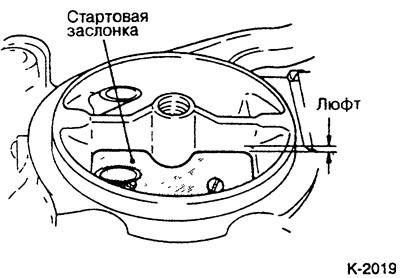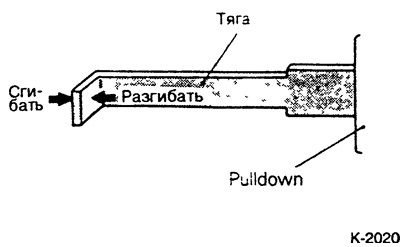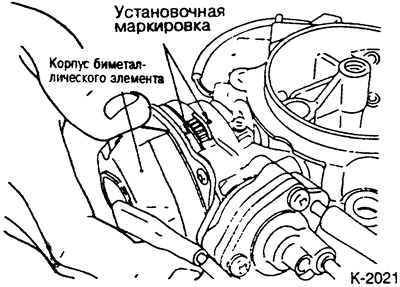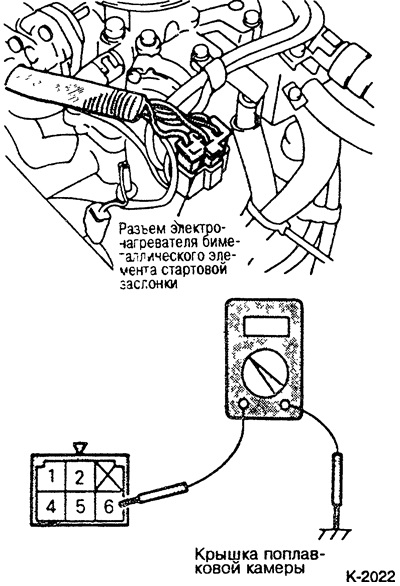Examination
Test condition: Coolant temperature must not exceed 10°C.
Remove the air filter see point 6.6.
Manually influence the homepage (air) damper. The starting damper is the topmost in the carburetor. The damper must rotate evenly in both directions without play. If there is too much play, replace the carburetor cap. If the damper sticks, clean and lubricate the rods and damper axle.

With the engine turned off, the start damper must be fully closed.
Start the engine and leave it to idle. After about 6 seconds, the start damper should open by 1.7-1.9 mm.
Remove the vacuum hose from the vacuum opening device ("Pulldown"). When the coolant temperature is less than 20°C, the start damper should close.
Check for vacuum at the Pulldown hose. To do this, put your finger on the removed vacuum hose.
Connect the vacuum hose and warm up the engine. The starting damper should open completely.
Start flap gap adjustment
When the engine is running at idle speed, close the starting damper with light finger pressure. Check the clearance as shown in the figure. Required value, see point 7.10.

In case of deviations from the required value, turn off the engine and bend the bent end of the rod as follows:
If the damper gap is large, the cold engine does not start well, often stalls: bend the thrust in the direction "Bend". If the damper gap is too small and the spark plugs are sooty: bend the rod in the direction "Unbend".
Start the engine and repeat the test.
Checking / adjusting automatic start (FBC carburettor)

Check the position of the markings on the body and on the cover of the bimetallic element. Both risks must match.
Otherwise, loosen the screws securing the cover of the bimetallic element and turn until the notches match.
When rearranging the risks of the bimetallic element to the right (clockwise), a cold engine will start better, but spark plugs will smoke faster.
When rearranging the risks of the bimetallic element to the left (counterclockwise), a cold engine starts worse, there is a tendency to stall.

Remove the cable part of the automatic start connector.
Use an ohmmeter to measure the resistance between the automatic start connection terminal and ground. See 7.10 for required value.
Start the engine and let it idle.
Check if the body of the automatic start unit is heated. At the same time, the start flap must open slowly.
If the case is not warm, check the automatic start relay, see point 23.3.
If the relay is OK, ring the wiring.
Install the air filter.
